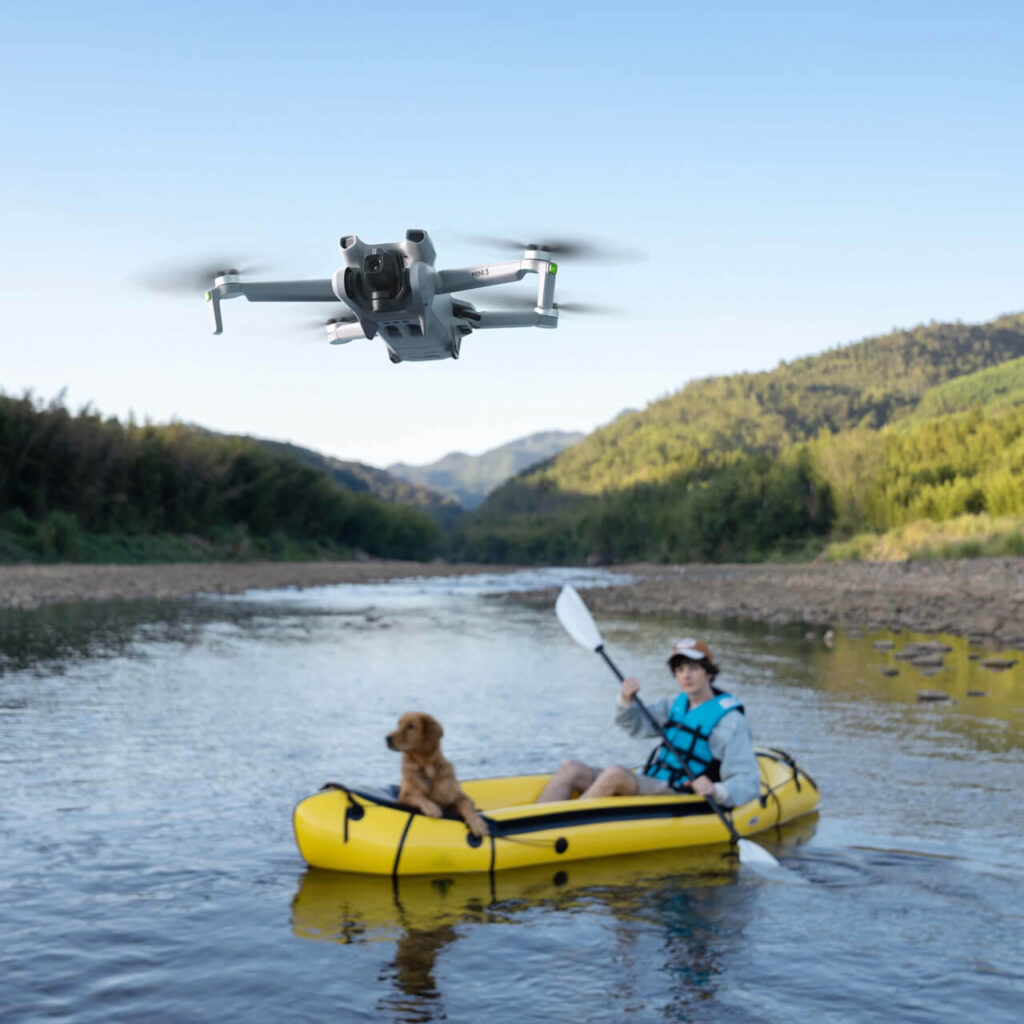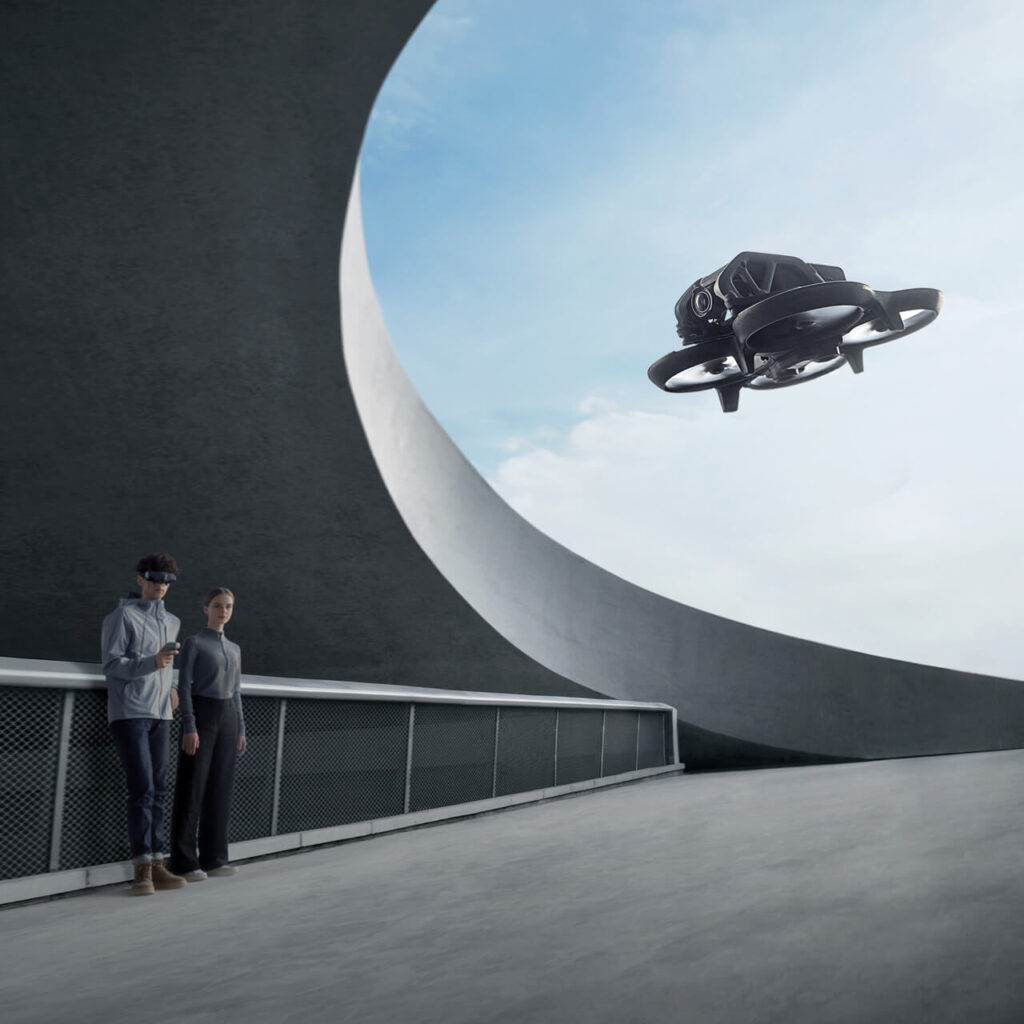Mini drones are no longer just toys for tech enthusiasts. In 2025, they’ve become essential tools for content creators, travelers, hobbyists, and even professionals who need a lightweight yet powerful flying companion. These compact drones are easy to carry, quick to launch, and come loaded with features once limited to larger, more expensive models.
Whether you’re aiming to capture cinematic aerial footage, practice flying basics, or just explore your surroundings from above, the mini drone market offers a wide range of choices to fit every need and budget.
But with so many options from leading brands like DJI, Autel, HoverAir, and Skydio, the big question remains which one is right for you?
That’s where this guide comes in. We’ve reviewed the 10 best mini drones of 2025, highlighting what each model offers, who it’s best suited for, and where it fits in today’s fast-growing drone landscape. And if you’re ready to buy, trusted retailers like Jetayu Gadgets make it easy to shop these top drone models in one place.
Whether you’re a first-time buyer or an experienced pilot looking to upgrade, this guide will help you choose the perfect mini drone for your goals.
What Is a Mini Drone?
A mini drone is a compact, lightweight unmanned aerial vehicle typically weighing under 250 grams. Despite their small size, today’s mini drones pack advanced features like high-resolution cameras, obstacle sensors, intelligent flight modes, and GPS capabilities.
They are especially popular among beginners, travelers, and content creators who need a portable yet capable flying camera. Most mini drones can be flown without a Remote Pilot License in India, depending on their category, making them accessible to a wider audience.
Why Should You Buy a Mini Drone?
Mini drones offer the perfect balance of convenience, performance, and price. Here’s why they’re gaining popularity in 2025:
- Travel-friendly: Lightweight and foldable designs fit easily in your bag
- Beginner-friendly: Easier to fly, often with built-in safety features
- Legal advantages: Most mini drones fall under the Nano or Micro category, which may not require a license in India
- Great for creators: Capture stunning aerial content without a bulky setup
- Budget flexibility: Options available from entry-level to professional-grade models
If you’re planning to start your content journey or surprise a creator in your life with a thoughtful gift, a mini drone might just be the perfect choice.
Things to Consider Before Buying a Mini Drone
Before you click “Buy Now”, consider these factors to make a smart decision:
- Weight and Category: Drones under 250g often fall into the Nano category in India. This affects the kind of license or permissions you may need. (see: Why Your Drone’s Weight Decides What Rules You Follow)
- Camera Quality: Look for at least 4K resolution and features like HDR, vertical shooting, or slow motion if you’re a vlogger or filmmaker.
- Flight Time: Anything above 30 minutes is great for casual use. Check if the drone supports a Fly More Combo with extra batteries.
- Obstacle Avoidance: Important if you’re flying in crowded areas or just starting out. It reduces the risk of crashing. (see: Worried About Crashing Your First Drone?)
- App & Controller Support: A good drone experience also depends on the app you use to fly it. (see: What Is the DJI Fly App and Why It Matters)
- After-Sales & Warranty: Know if the drone is brand-new or refurbished. (see: Bought a Drone Recently? Here’s How to Verify If It’s Not Refurbished)
List of 10 Best Mini Drones for 2025
- DJI Mini 4 Pro – Flagship performance in a sub-250g body
- DJI Mini 3 Pro – Great balance of features and value
- DJI Mini 3 – Entry-level friendly and budget-conscious
- DJI Mini 2 SE – Best for beginners and casual flyers
- HoverAir X1 – Hands-free flying with follow-me features
- Autel EVO Nano Plus – Powerful low-light camera in a mini format
- DJI Mini 2 – Still reliable for creators on a budget
- Skydio 2+ – Autonomous flying with unmatched obstacle avoidance
- DJI Mini SE – Affordable drone for total beginners
- Autel EVO Nano – Compact and creator-ready with 4K video
1. DJI Mini 4 Pro
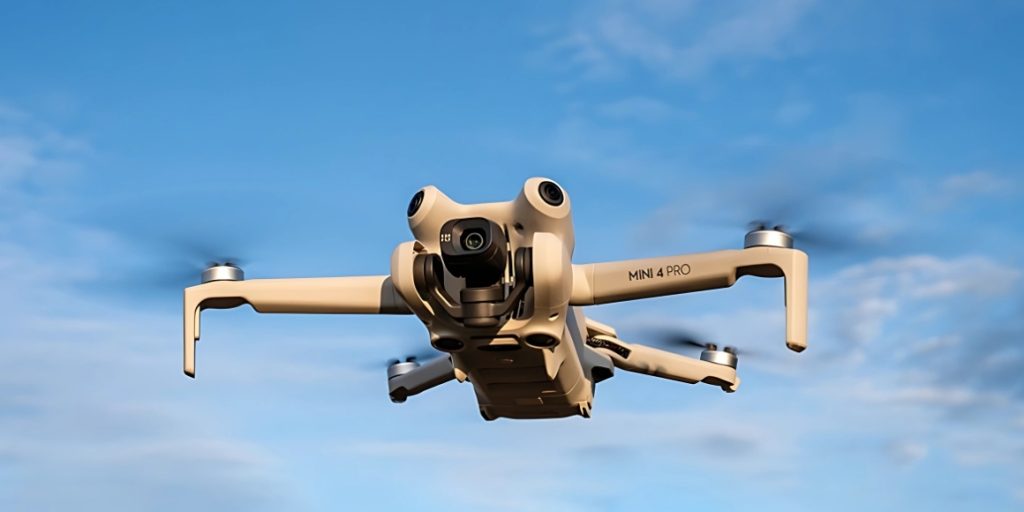
The DJI Mini 4 Pro is one of the most advanced ultra-light drones in the market. Weighing under 249 grams, it combines portability with professional-grade features, making it ideal for solo travelers, vloggers, and creators. It features a powerful 1/1.3-inch CMOS camera that shoots 4K HDR at 60fps, even in tricky lighting. What sets it apart is the omnidirectional obstacle sensing, offering extra protection during complex shots.
If you’re starting your content journey or upgrading from the Mini 3 Pro, this drone strikes the right balance between power and ease. Many users also compare this with other DJI bundles, especially when evaluating the Fly More Combo options.
Features and Specifications of DJI Mini 4 Pro
- Weight: Under 249 grams
- 4K/60fps HDR video recording
- 1/1.3-inch CMOS wide-angle camera
- 10-bit D-Log M and HLG color profiles
- 4K/100fps slow-motion support
- Omnidirectional obstacle sensing
- ActiveTrack 360 and waypoint flight
- Up to 20 km max video transmission range (DJI O4)
- Up to 45 minutes max flight time (with Intelligent Flight Battery Plus)
Pros and Cons of DJI Mini 4 Pro
Pros
- Outstanding low-light performance for its size
- Excellent video transmission with 1080p at 60 fps
- Reliable tracking and intelligent flight modes
- Strong safety features with full 360° obstacle sensing
- Great battery life with extended flight option
Cons
- Premium price point for a mini drone
- Can struggle with shadows and light balance in very low light
2. DJI Mini 3 Pro
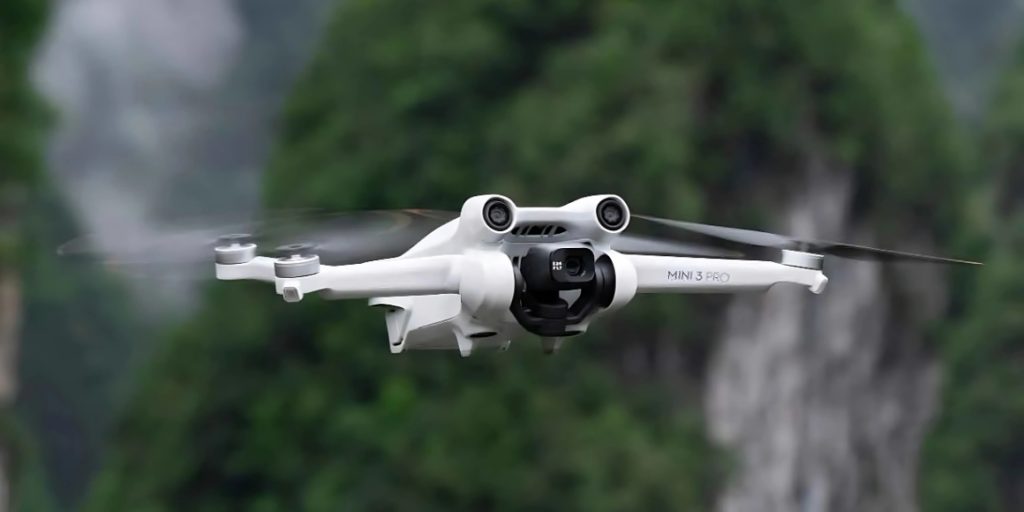
The DJI Mini 3 Pro redefined what mini drones could offer when it launched. It still holds strong in 2025, especially for users who want pro-level features without going all the way up to the Mini 4 Pro’s price. This drone weighs under 249 grams but brings advanced features like tri-directional obstacle sensing, vertical video shooting, and a 1/1.3-inch sensor capable of shooting 4K video at 60fps.
If you’re stuck deciding between this model and the newer Mini 4 Pro, consider how much value you get here for the price. It’s a great option for those comparing DJI Fly More Combos or simply trying to figure out which combo is right for you.
Features and Specifications of DJI Mini 3 Pro
- Weight: Under 249 grams
- 4K/60fps HDR video with True Vertical Shooting
- 1/1.3-inch CMOS sensor with dual native ISO
- D-Cinelike Color Profile
- Tri-directional obstacle sensing (forward, backward, downward)
- ActiveTrack, Point of Interest, and Spotlight flight modes
- 34-minute flight time (up to 47 mins with extended battery)
- DJI O3 transmission with 12 km range
Pros and Cons of DJI Mini 3 Pro
Pros
- Excellent image quality and color accuracy
- Vertical shooting for reels and social content
- Strong obstacle detection for a mini drone
- Multiple intelligent flight modes for cinematic shots
- Compatible with the RC controller with built-in screen
Cons
- No omnidirectional obstacle sensing
- Price is still premium compared to newer budget models
3. DJI Mini 3
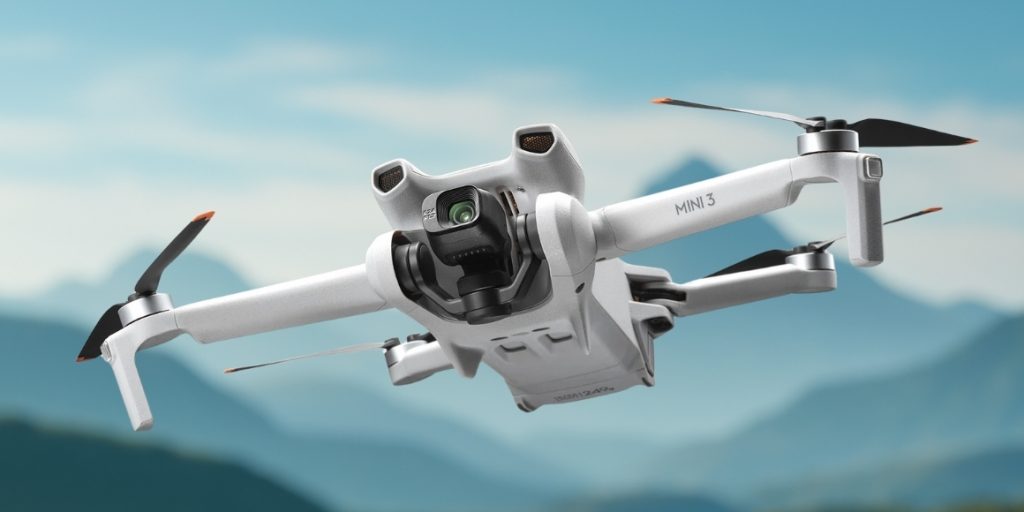
The DJI Mini 3 offers a well-rounded flying experience for beginners and creators who want better image quality than the SE or Mini 2 but don’t need the advanced tracking or sensors of the Pro models. It’s lightweight, easy to control, and delivers impressive 4K footage all without crossing the 250g limit.
If you’re buying a drone for the first time or planning to use it for travel, this model helps you get started without overwhelming you. It’s also a smart pick for those asking, “Is buying a drone enough to start my journey as a content creator?” This one certainly gets you going.
Features and Specifications of DJI Mini 3
- Weight: Under 249 grams
- 4K/30fps video with HDR support
- 1/1.3-inch CMOS sensor
- True Vertical Shooting for social media content
- 12 km max video transmission range
- 38-minute flight time (up to 51 mins with extended battery)
- Wind resistance: Level 5
Pros and Cons of DJI Mini 3
Pros
- Lightweight and beginner-friendly
- Strong camera performance for its price
- Long flight time compared to older models
- Vertical video support for Instagram Reels or YouTube Shorts
- Great for learning cinematic shooting basics
Cons
- No obstacle avoidance
- Lacks advanced flight modes like ActiveTrack or POI
4. DJI Mini 2 SE

The DJI Mini 2 SE is one of the most accessible drones in DJI’s lineup. It’s ideal for beginners or casual flyers who want a reliable, no-fuss experience without spending too much. Though it doesn’t have 4K video or obstacle avoidance, it still delivers smooth 2.7K footage, solid stability, and impressive range for the price.
If you’re looking to surprise someone with a thoughtful yet affordable drone gift — especially a beginner this is a strong contender. It’s often recommended in guides that help people figure out what drone to gift a new photographer or videographer.
Features and Specifications of DJI Mini 2 SE
- Weight: Under 249 grams
- 2.7K video resolution
- 1/2.3-inch CMOS sensor
- 3-axis mechanical gimbal
- 10 km max transmission range (OcuSync 2.0)
- 31-minute flight time
- Wind resistance: Level 5
Pros and Cons of DJI Mini 2 SE
Pros
- Budget-friendly without feeling cheap
- Great for new flyers and young creators
- Simple and responsive controls
- Good flight time and range for the price
- Extremely portable and travel-ready
Cons
- No 4K video capability
- No obstacle avoidance or tracking features
- Limited photo and video profiles
5. HoverAir X1
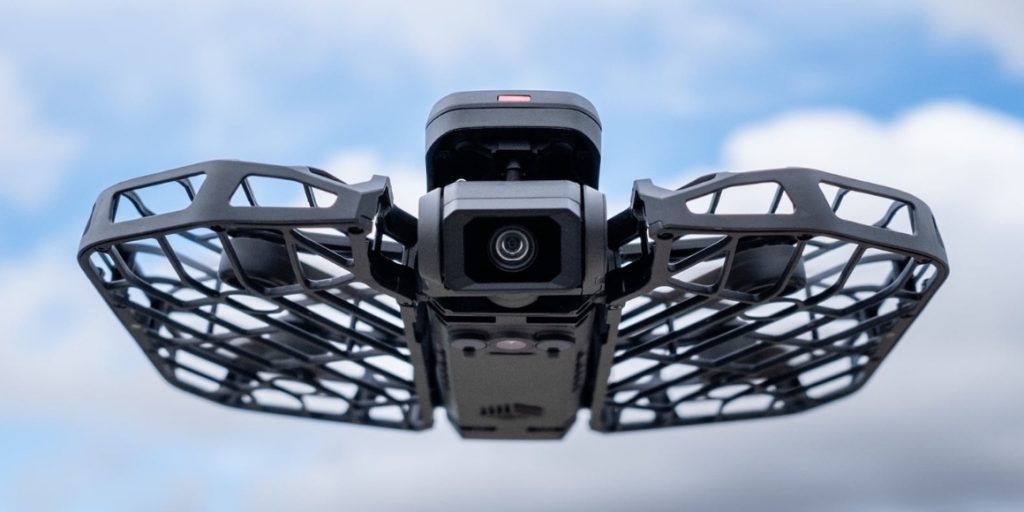
The HoverAir X1 is unlike any traditional drone on this list. It’s a palm-sized, foldable flying camera designed for quick social content and hands-free shots. With built-in flight paths, auto-follow, and no need for a controller or phone app, the X1 makes aerial filming incredibly easy especially for solo vloggers and runners who want to film themselves in motion.
This drone is ideal for creators asking, “Can I film my solo adventure without a crew?” or “What can a drone capture that a regular camera cannot?” The HoverAir X1 answers both questions with simplicity and smart design.
Features and Specifications of HoverAir X1
- Weight: 125 grams (Nano category)
- No controller needed launch from hand
- 2.7K video at 30fps and 1080p at 60fps
- Auto-follow, orbit, zoom out, and bird’s-eye flight modes
- Built-in 32GB internal storage
- 11-minute flight time per charge
- Obstacle sensing on front and bottom
Pros and Cons of HoverAir X1
Pros
- No registration needed under Indian drone rules
- Super compact and ultra-light
- Great for quick, hands-free video shots
- Very easy to use for total beginners
- Perfect for solo travelers, fitness influencers, and social media creators
Cons
- Not suitable for long-distance or high-altitude shots
- Short battery life
- Limited manual control
6. Autel EVO Nano Plus
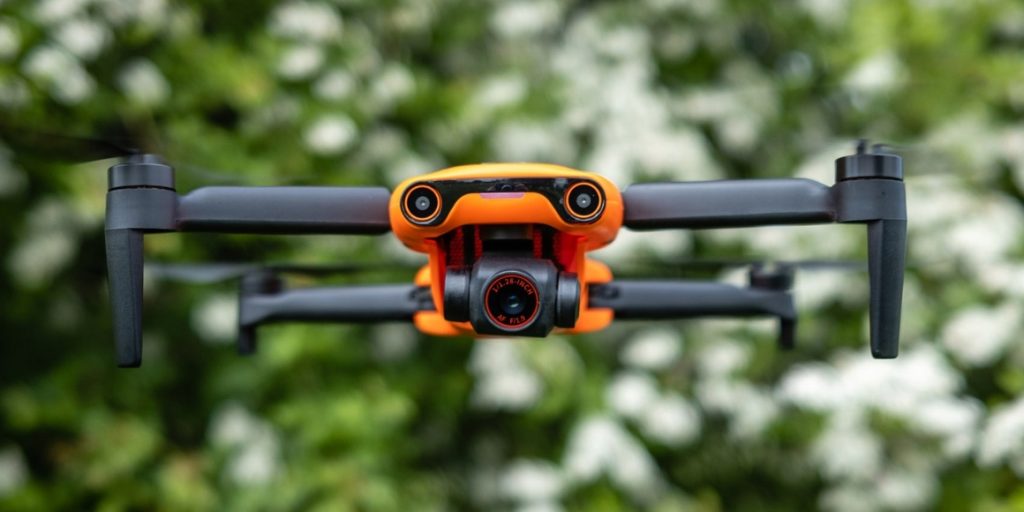
The Autel EVO Nano Plus is one of the strongest challengers to DJI in the mini drone space. It’s built for creators who want premium imaging in a lightweight body. Its standout feature is a large 1/1.28-inch CMOS sensor with a fast f/1.9 aperture, which delivers impressive low-light performance — something even the DJI Mini 3 and Mini 4 Pro can struggle with in certain conditions.
If you’re serious about shooting during golden hour or in cloudy weather, this drone is worth a close look. It’s also a smart option for buyers who are worried about getting a refurbished drone — the Nano Plus is frequently stocked as brand new with full warranty through official sellers like Jetayu Gadgets.
Features and Specifications of Autel EVO Nano Plus
- Weight: 249 grams
- 4K/30fps HDR video
- 1/1.28-inch CMOS sensor with f/1.9 aperture
- PDAF + CDAF autofocus system
- 50 MP still image capture
- Obstacle avoidance (forward, backward, downward)
- 28-minute flight time
- Up to 10 km video transmission range
Pros and Cons of Autel EVO Nano Plus
Pros
- Excellent low-light camera performance
- Large sensor for better depth and sharpness
- Strong autofocus for moving subjects
- Tri-directional obstacle sensing
- Comes in multiple colors and stylish designs
Cons
- Slightly shorter flight time than DJI Mini series
- Autel app interface can feel less refined
- Fewer third-party accessories available compared to DJI
7. DJI Mini 2
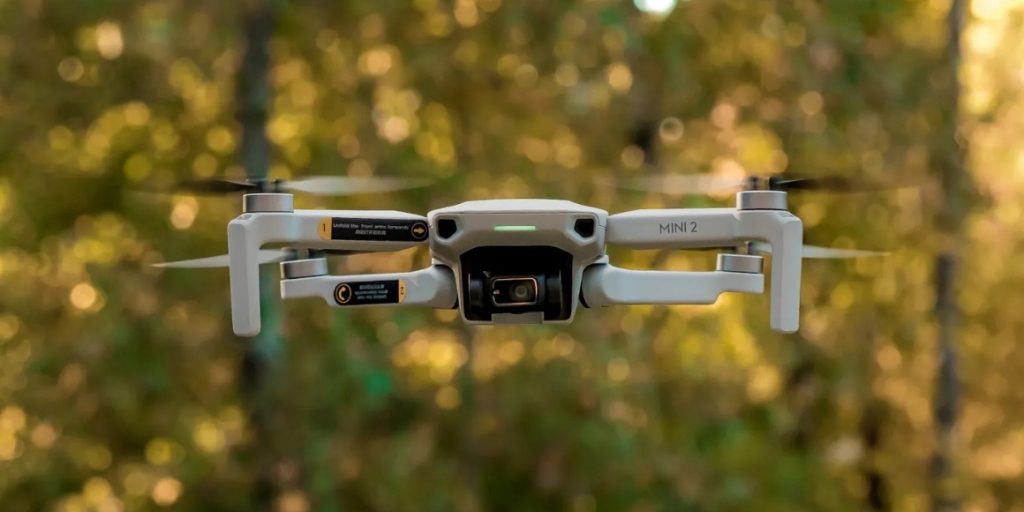
The DJI Mini 2 might be a few years old now, but it still holds strong in 2025 as a reliable, budget-friendly option for those who want 4K video and long-range control in a lightweight drone. It’s especially popular among first-time buyers who want something proven, stable, and easy to fly.
If you’re looking for your first camera UAV, and you’re unsure about how much to invest upfront, the Mini 2 offers excellent value. Many new users also appreciate how it introduces them to features like manual camera control and wind resistance helping them transition to more advanced models later on.
Features and Specifications of DJI Mini 2
- Weight: Under 249 grams
- 4K/30fps video with 12MP photos
- 3-axis motorized gimbal
- OcuSync 2.0 with up to 10 km range
- 31-minute max flight time
- Level 5 wind resistance
- QuickShots for automated cinematic shots
Pros and Cons of DJI Mini 2
Pros
- Excellent camera quality for its price
- Great range and connection stability
- Compact, durable, and beginner-friendly
- Works with most DJI accessories
- Simple yet powerful flight app
Cons
- No obstacle avoidance
- No vertical video mode
- Lacks newer color profiles like D-Cinelike or HLG
8. Skydio 2+
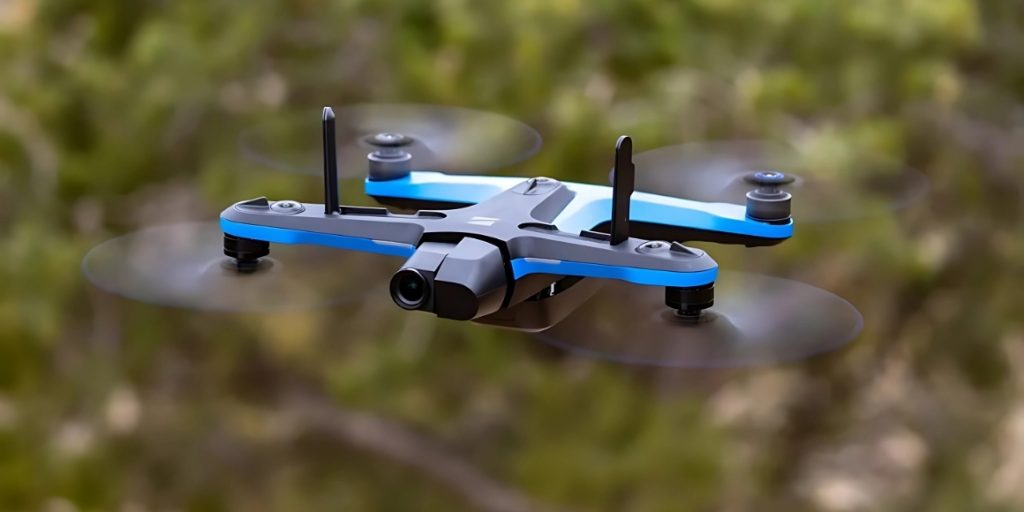
The Skydio 2+ takes autonomous flying to a level that very few mini drones can match. While it’s slightly larger and heavier than the ultra-light sub-250g category, it’s still compact enough for creators and professionals who need hands-free, intelligent flight tracking especially in complex environments like forests, construction zones, or uneven terrain.
This drone is ideal for those working on dynamic shoots or survey projects where following fast-moving subjects or avoiding trees and structures is critical. For creators who ask, “Can a drone really follow me without crashing?” this is the answer.
Features and Specifications of Skydio 2+
- Weight: Approx. 800 grams (Note: Not a sub-250g drone)
- 4K/60fps video with HDR
- 1/2.3-inch CMOS sensor
- Unmatched obstacle avoidance using six 4K navigation cameras
- KeyFrame and Skydio Autonomy flight paths
- Up to 27 minutes flight time
- Optional Beacon or Controller for manual input
- 6 km transmission range
Pros and Cons of Skydio 2+
Pros
- Industry-best autonomous obstacle avoidance
- Ideal for action sports, outdoor shoots, and inspection tasks
- Easy to fly even without prior drone experience
- KeyFrame lets you pre-program complex flight paths
- Strong safety record for tight environments
Cons
- Heavier and bulkier than typical mini drones
- Shorter battery life than DJI Mini 4 Pro
- Limited availability and accessories in India
9. DJI Mini SE
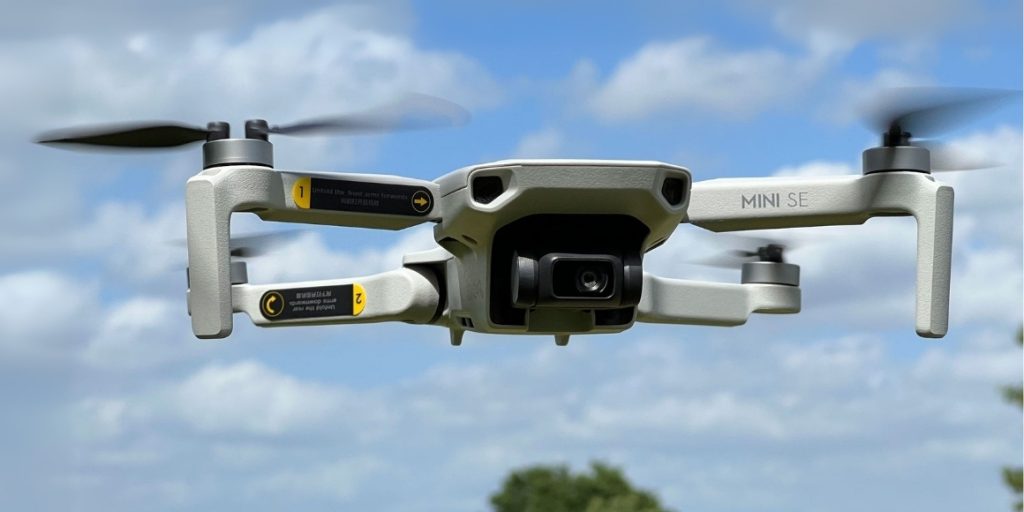
The DJI Mini SE is one of the most affordable drones from DJI, designed specifically for beginners who want a high-quality flying experience without spending a lot. It borrows the body from the Mini 2 and the internal specs from the original Mini, striking a balance between value and performance.
This drone is ideal for casual flyers, students, or those testing out drone flying for the first time. If you’re unsure whether to buy or rent a drone, the Mini SE is budget-friendly enough to consider owning right away.
Features and Specifications of DJI Mini SE
- Weight: Under 249 grams
- 2.7K video at 30fps and 12MP still photos
- 3-axis gimbal stabilization
- Up to 4 km HD video transmission (Wi-Fi Enhanced)
- 30-minute flight time
- Wind resistance: Level 5
- GPS-based return to home (RTH)
Pros and Cons of DJI Mini SE
Pros
- Great build quality for a budget drone
- Easy to learn and control
- Stable video thanks to 3-axis gimbal
- Lightweight and registration-free under most rules
- Ideal entry point for new drone hobbyists
Cons
- No 4K video or HDR
- No obstacle sensing
- Shorter range and fewer smart features
| Model | Camera | Range | Flight Time | Best For | Weight |
|---|---|---|---|---|---|
| DJI Mini 4 Pro | 1/1.3″ CMOS, 4K/60fps HDR | Up to 20 km | Up to 45 mins | Advanced creators, vloggers | <249 g |
| DJI Mini 3 Pro | 1/1.3″ CMOS, 4K/60fps HDR | Up to 12 km | Up to 47 mins | Intermediate users, vertical video | <249 g |
| DJI Mini 3 | 1/1.3″ CMOS, 4K/30fps | Up to 12 km | Up to 51 mins | Beginner creators, travelers | <249 g |
| DJI Mini 2 SE | 1/2.3″ CMOS, 2.7K/30fps | Up to 10 km | Up to 31 mins | First-time flyers, hobbyists | <249 g |
| HoverAir X1 | 2.7K/30fps, 1080p/60fps (fixed) | Short-range | Up to 11 mins | Solo content creators, social media | 125 g |
| Autel EVO Nano Plus | 1/1.28″ CMOS, 4K/30fps | Up to 10 km | Up to 28 mins | Low-light shooting, creators | 249 g |
| DJI Mini 2 | 1/2.3″ CMOS, 4K/30fps | Up to 10 km | Up to 31 mins | Budget-conscious content starters | <249 g |
| Skydio 2+ | 1/2.3″ CMOS, 4K/60fps | Up to 6 km | Up to 27 mins | Autonomous tracking, outdoor sports | ~800 g |
| DJI Mini SE | 1/2.3″ CMOS, 2.7K/30fps | Up to 4 km | Up to 30 mins | Students, first-time users | <249 g |
| Autel EVO Nano | 1/2″ CMOS, 4K/30fps | Up to 10 km | Up to 28 mins | Compact creators, alternative to DJI | 249 g |
Frequently Asked Questions About Mini Drones in 2025
1. Do I need a license to fly a mini drone in India?
For drones under 250 grams (like most on this list), you typically do not need a license for personal or recreational use. However, if you use it for commercial purposes, or fly it beyond visual line of sight, you may need permission from authorities.
Related: Can I Fly My Drone Freely or Do I Need a License?
2. Is the DJI Fly More Combo worth buying?
Yes, if you plan to fly often. The Fly More Combo usually includes extra batteries, a charging hub, propellers, and a carrying case — all of which save money compared to buying separately.
Related: What Is the DJI Fly More Combo? Is It Worth It in 2025?
3. Which mini drone is best for beginners in 2025?
For total beginners, the DJI Mini 2 SE or DJI Mini SE are solid choices due to their affordability and simplicity. If you want better video quality and features, the DJI Mini 3 offers a balanced upgrade.
Also read: Buying a Drone for the First Time? The DJI Mini 4 Pro Makes It Easy to Fall in Love with Flying
4. Can I take a mini drone on a flight while traveling abroad?
Yes, mini drones can usually be carried in hand baggage. Make sure to check airline rules and battery safety guidelines, especially for international flights.
Related: Can You Carry a Drone with You on an International Flight to India?
5. How do I know if the drone I bought is refurbished or original?
Always check the product packaging, warranty activation status, and serial number on the brand’s official app or website. Genuine retailers like Jetayu Gadgets clearly label new vs. refurbished units.
Related: Bought a Drone Recently? Here’s How to Verify If It’s Not Refurbished


